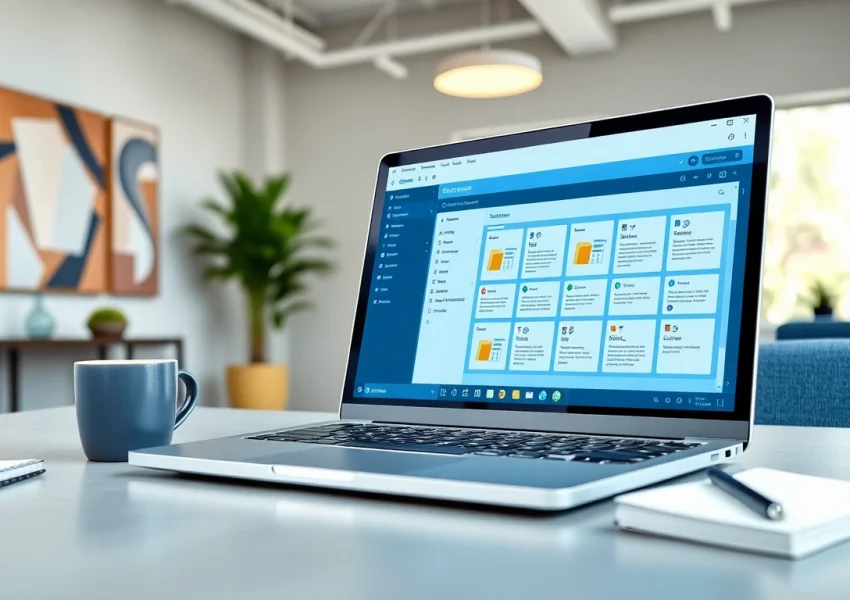Understanding the Basics of Website Design
Defining Website Design and Its Importance
Website design is the process of planning and creating websites, encompassing a variety of skills and disciplines in the production and maintenance of websites. It includes aspects such as web graphic design, user interface design, authoring, and search engine optimization (SEO). A well-designed website serves as a critical tool for businesses and individuals alike, offering a platform for information sharing, branding, and user engagement. The importance of website design cannot be understated; it directly impacts user experience, conversion rates, and overall success in digital spaces. For those looking to enhance their online presence, understanding the fundamentals of website design is essential.
Key Elements of Effective Website Design
Effective website design hinges on several key elements that work synergistically to create a cohesive and engaging user experience. These include:
- Navigation: Clear and intuitive navigation allows users to find information quickly, facilitating a positive user experience.
- Content: High-quality, relevant content that resonates with the target audience is fundamental for maintaining user interest and engagement.
- Visual Hierarchy: The arrangement of elements in a way that guides the user’s focus through the most critical areas of the page.
- Loading Speed: Fast-loading pages reduce bounce rates and improve user satisfaction, making speed a vital aspect of design.
- Mobile Responsiveness: A mobile-friendly design ensures that users have a seamless experience, regardless of the device they utilize.
Common Misconceptions About Website Design
Many misconceptions exist around website design, which can hinder effective design practices. Some of the most common include:
- Website Design is Just About Aesthetics: While aesthetics are crucial, the functional usability of the website is just as important. A visually appealing site that is difficult to navigate will drive users away.
- More Features Mean a Better Website: Overloading a site with features can lead to clutter and confusion. Simplicity is often the key to better user experience.
- Once Designed, It Stays That Way: Continuous updates and iterations based on user feedback and changing trends are essential for maintaining an effective website.
Fundamental Principles of Website Design
Building a User-Centric Website Design
User-centric design focuses on tailoring the website experience to meet the needs of users, which requires understanding who the users are and what they expect from the site. Conducting user research through surveys, interviews, and usability testing can provide valuable insights that inform design choices. Here are some strategies for implementing user-centric design:
- Personas: Create fictional characters representing your ideal users to guide design decisions.
- User Journeys: Map out the typical paths users take to navigate your site, ensuring that critical actions are easily accessible.
- Feedback Loops: Incorporate systems for ongoing user feedback and adjust the design based on this input.
The Role of Accessibility in Website Design
Accessibility is a crucial aspect of website design, ensuring that all users, including those with disabilities, can access information and interact with the site. To create an accessible website, consider the following best practices:
- Alternative Text for Images: Use descriptive alt text to assist screen readers in conveying visual content to visually impaired users.
- Keyboard Navigation: Ensure that every functional element can be navigated using a keyboard for users unable to use a mouse.
- Contrast and Color Usage: Utilize high color contrast and avoid relying solely on color to convey information, aiding users with color blindness.
Responsive Design: Adapting to Different Devices
With the growing use of various devices for web browsing, responsive design has become essential. Responsive design ensures that a website adjusts seamlessly across different screen sizes, from desktops to smartphones. Key strategies for achieving responsive design include:
- Fluid Grids: Use relative units instead of fixed sizes to allow layout components to resize appropriately.
- Flexible Images: Implement CSS techniques that allow images to scale and fit seamlessly within their containing elements.
- Media Queries: Use CSS media queries to set different styles for different device widths, ensuring optimal viewing experiences everywhere.
Creating Compelling Visuals for Website Design
Choosing the Right Color Palette
The color palette of a website plays a significant role in evoking emotions and creating a brand identity. When selecting colors, consider not only the appeal but also color psychology, which suggests that different colors elicit different feelings. Here are some strategies for creating an effective color palette:
- Limit Color Selection: Choose a primary color and one or two complementary colors to maintain visual unity.
- Use Contrast: Ensure sufficient contrast between background and foreground colors to enhance readability.
- Brand Consistency: Align color choices with brand colors to reinforce recognition and trust among users.
Typography: The Importance of Font Selection
Typography is more than just aesthetics; it greatly influences the readability and user experience of a website. Selecting the right fonts entails considering legibility, style, and the emotional response they evoke. Here are some tips for font selection:
- Choose Readable Fonts: Opt for standard, well-known typefaces for body text, while using decorative fonts sparingly for headings or accents.
- Hierarchy Through Size: Use font size variations to establish a hierarchy, guiding users through the information presented.
- Limit Font Families: Stick to two or three font families to avoid design inconsistency and clutter.
Utilizing Images and Videos Effectively in Website Design
Visual content such as images and videos play a vital role in engaging users and conveying messages quickly. Here are strategies for effectively using visual media:
- High-Quality Visuals: Always use high-resolution images and video that reflect professionalism and enhance brand image.
- Optimize for Load Speed: Compress images and videos to reduce page load times while maintaining quality.
- Contextual Relevance: Ensure that visual content is relevant to the surrounding text and adds value to the user experience.
Technical Aspects of Website Design
Understanding HTML and CSS
HTML (HyperText Markup Language) and CSS (Cascading Style Sheets) are the foundational technologies for creating websites. HTML structures your content, while CSS styles it visually. Understanding the basics of these languages is beneficial for implementing effective website design:
- Semantic HTML: Use elements that provide meaning to the content, improving accessibility and SEO. For instance, make use of
<header>,<nav>, and<footer>tags appropriately. - CSS Flexbox and Grid: Leverage modern CSS layout techniques like Flexbox and Grid to create flexible and responsive designs.
- Browser Compatibility: Test designs across various web browsers to ensure consistent user experiences.
Website Performance: Speed and SEO Considerations
Website performance is integral to user satisfaction and search engine rankings. Google and other search engines factor page speed into their algorithms, making it essential to optimize for speed. Here are some performance optimization strategies:
- Reduce HTTP Requests: Minimize the number of elements that need to be loaded, such as scripts, stylesheets, and images, to speed up load times.
- Leverage Browser Caching: Enable browser caching to store static files locally, reducing load times for repeat visitors.
- Content Delivery Networks (CDNs): Use CDNs to distribute content geographically closer to users, thus improving loading speed.
Utilizing Content Management Systems for Website Design
Content Management Systems (CMS) provide an invaluable framework for website design and functionality. They allow users to create, edit, and manage website content without requiring extensive technical knowledge. Popular CMS options include:
- WordPress: Highly versatile and supported by a vast community, making it suitable for numerous site types.
- Joomla: Offers a balance between ease of use and complexity, making it great for developers and users alike.
- Squarespace: Ideal for users seeking an all-in-one solution with beautiful design templates.
Analyzing and Improving Your Website Design
Conducting User Testing and Gathering Feedback
User testing is a critical process in refining website design. Observing real users as they navigate through the site can reveal pain points and areas for improvement. Here are effective methods for user testing:
- Usability Testing Sessions: Conduct sessions where users perform specific tasks on your site while observers take notes on any difficulties encountered.
- A/B Testing: Test two different versions of a webpage to determine which performs better regarding user engagement or conversion rates.
- Surveys and Feedback Forms: Utilize surveys to gather qualitative feedback and insights from users after interactions.
Using Analytics to Track Website Design Performance
Analytics tools play a crucial role in measuring how well your website design meets user needs and objectives. Utilizing metrics helps in making informed design decisions. Essential KPIs include:
- Bounce Rate: Monitor the percentage of visitors who leave the site without engaging, indicating potential design flaws.
- Average Time on Page: Measure how long users stay on your pages, with higher times often reflecting more engaging content.
- Conversion Rates: Track how many users complete desired actions, such as signing up or making purchases, to assess the effectiveness of your design.
Staying Updated with Trends in Website Design
Website design trends are continuously evolving as technology, user preferences, and industry standards shift. Staying updated is essential for keeping your website relevant and effective. Follow these strategies for trend awareness:
- Design Blogs and Resources: Regularly read design-focused blogs and resources to stay informed about emerging trends and best practices.
- Network with Designers: Participate in design communities and attend webinars or conferences to exchange knowledge with fellow designers.
- Analyze Competitor Sites: Keep an eye on your competitors and successful sites in your industry to understand what design elements resonate with users.






